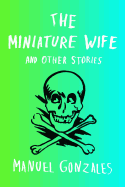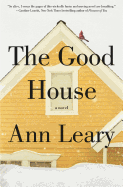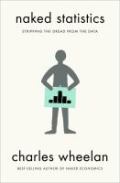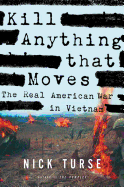
| Publisher: | Riverhead | |
| Genre: | Fiction, Literary | |
| ISBN: | 9781594486043 | |
| Pub Date: | January 2013 | |
| Price: | $26.95 |
| Starred | Fiction |
by Manuel Gonzales
Zombies, werewolves, a unicorn, sinking continents, a Lilliputian wife... no subject seems out of bounds for Manuel Gonzales in his superb first collection of stories, The Miniature Wife. Call his work magical realism, science fiction or just plain storytelling--it works. The secret may be the first-person voice narrating most of the stories: a self-deprecating, amused, often puzzled voice. No matter how outlandish the premise, each story seems perfectly plausible. Yet within these tall tales, Gonzales also explores very real modern dilemmas.
The opening story, "Pilot, Copilot, Writer," establishes a typical disorienting template for those that follow. A commercial airline flight inexplicably begins to circle Dallas. After the passengers exhaust conversation, the pilot explains that there is no destination or arrival time. The flight goes on for 20 years: passengers die; a child is born and learns to copilot the plane, replacing the pilot when he dies. The narrator wonders about their futures should the plane ever land: "Is twenty years long enough to wipe away bad marriages, poor career choices, too many long hours spent following someone else's dreams?"
Gonzales never loses his stride as the stories jump forward, and he pulls the reader effortlessly along with him all the way through to the concluding "Escape from the Mall," where the narrator confronts zombie carnage and asks: "But to make him one of their own, how much brain would a zombie need to eat? Not much by my reckoning." So it is with these weirdly comforting stories. We need eat just a bit to be sucked into Gonzales's world. --Bruce Jacobs, founding partner, Watermark Books & Cafe, Wichita, Kan.

| Publisher: | Riverhead | |
| Genre: | Biographical, General, Fiction, Historical, Literary | |
| ISBN: | 9781594486241 | |
| Pub Date: | January 2013 | |
| Price: | $27.95 |
| Starred | Fiction |
by Cathy Marie Buchanan
Cathy Marie Buchanan's The Painted Girls explores belle epoque Paris from the point of view of the teenage student dancer who modeled for Edgar Degas's sculpture The Little Dancer, Age Fourteen. Loosely inspired by the true story of the van Goethem sisters of Montmartre, Buchanan's story follows Marie, a struggling ballet dancer, and her older sister, Antoinette, as they battle what seems an inevitable fate of destitution and despair.
When their father dies, leaving only their alcoholic mother to care for them, the sisters face the challenge of simple survival. Hoping to earn enough money for food and shelter, Marie enrolls in dancing school. Every girl there cherishes the dream of outshining the others, and attracting the patronage of the abonnés--wealthy men with a particular interest in dancers. First, though, Marie attracts the attention of Degas, who asks her to model for him.
Buchanan describes the world of 19th-century Parisian ballet in meticulous detail. The Painted Girls underscores the grim need that fuels the dancers, raw emotion that found its way into the works of Degas in violent slashes of pastel. What may be most remarkable in the novel, however, are the relationships between the female characters--Marie and her schoolmate Blanche; Antoinette and the beautiful prostitute Colette. The heart of the novel is the love between the sisters, which forms the bedrock of their lives--and will become, in a convergence of tragic events, what is ultimately most at stake. --Ilana Teitelbaum, book reviewer at the Huffington Post

| Publisher: | Liveright | |
| Genre: | General, Fiction, Classics, African American | |
| ISBN: | 9780871403353 | |
| Pub Date: | January 2013 | |
| Price: | $22.95 |
| Fiction |
by Eric Walrond
The Liveright publishing imprint first published Eric Walrond's Tropic Death in 1926, when Walrond was 28. The short story collection was one of many outstanding books written by black authors during the Harlem Renaissance. Walrond came to New York from the Caribbean and all of the stories are set in Barbados, the Canal Zone, British Guiana or Panama.
Walrond's stories beautifully capture the daily lives of his characters. As Arnold Ampersand points out in his fine introduction to the 21st-century Liveright's reissued edition, Walrond "sought to fuse modernism with folk forms, the better to do justice to the complexity of Black life as it lurched uncertainly into the twentieth century." This meant that his characters speak in the region's various dialects, which can make for challenging reading. In a spooky tale about superstition and death, "The Vampire Bat," Walrond juxtaposes very lyrical, poetic language--"The wind soared to a higher, sturdier level. It blew like breezes on the gay Caribbean sea... But the moon ribbed the night and gave the canes, tottering on the high flat earth, a crystal cloaking"--with the harsh, realistic language of the people--"Mas' Prout wha' yo' a do down yah dis time o' night? Yo' na'h go home no?"
The book's title hints at Walrond's dark, often malevolent subject matter. Fatalism and pessimism abound, but his characters exhibit great fortitude and spirit to overcome their harsh and often deadly environment. --Tom Lavoie, former publisher

| Publisher: | St. Martin's Press | |
| Genre: | Fiction, Contemporary Women | |
| ISBN: | 9781250015549 | |
| Pub Date: | January 2013 | |
| Price: | $24.99 |
| Fiction |
by Ann Leary
Ann Leary's second novel, The Good House, is set in Wendover, Mass., a coastal town where real estate has replaced lobstering as the biggest business. Leary tells her story through delightfully frank real estate broker Hildy Good. "I know everything that happens in this town," she says. "I'm an old townie; the eighth-great-granddaughter of Sarah Good, one of the accused witches tried and hanged in Salem.... I live alone; my daughters are grown and my husband is no longer my husband. I talk to animals."
Hildy has her own secrets: the recession has hurt her business, and firms like Sotheby's are moving on to her turf. Her daughters are in and out of therapy and financially dependent on her, but not so dependent that they don't orchestrate an "intervention" and withhold access to her beloved grandchild unless she deals with her alcoholism. Her ex-husband finally accepted his homosexuality, only to be abandoned by his romantic partner. Her childhood friend, the town's only psychiatrist, is having an affair with a wealthy horsewoman and former patient who has become madly obsessive. As Hildy's surreptitious, lonely drinking grows out of control, another childhood friend, Frankie--the town's garbage man, handyman and snow removal tycoon--takes her under his wing with a love and tolerance she has never quite experienced before.
It's the voice of Hildy that makes Anne Leary's new novel work so well. Her irreverent observations and sharp chatterbox tongue are balanced by a vulnerability that makes her the perfect commentator on a world too much like it really is. --Bruce Jacobs, founding partner, Watermark Books & Cafe, Wichita, Kan.

| Publisher: | Pegasus | |
| Genre: | General, Police Procedural, Fiction, Mystery & Detective, Women Sleuths | |
| ISBN: | 9781605983783 | |
| Pub Date: | January 2013 | |
| Price: | $25.95 |
| Mystery & Thriller |
by John Harvey
A new crime thriller from the prolific John Harvey, creator of the popular Charlie Resnik mysteries (Lonely Hearts), is always a cause for celebration.
The title of Good Bait comes from a popular Tadd Dameron jazz piece that is played in two distinct keys, just as this novel's two stories play out in opposition to each other. Detective Chief Inspector Karen Shields, who appeared in Harvey's Cold in Hand, is called in one "frozen December morning" to investigate the death of a young Moldovan teenager whose body is found in an icy pond near London. A young officer who has experienced sexism and racism in her career, Shields is proud of her position and aggressively pursues the case no matter where it takes her.
Meanwhile, Detective Inspector Trevor Cordon, "stationed in the middle of nowhere" (Cornwall), is a worn-out, divorced loner, reading Trollope and eager to retire. His sluggishness is disrupted when a woman from his past asks for help to find her missing daughter. Cordon became a bit too close to the girl when she was a young troublemaker, so he now somehow feels obligated to "save" her from something. With the help of private investigator Jack Kiley (another returning Harvey character), he undertakes the search. Like two live wires that never join, sparks abound as Harvey slowly unfolds his dark tales about a vast, nasty Eastern European underworld that has infested the city of London and the British countryside. --Tom Lavoie, former publisher

| Publisher: | Mysterious Press | |
| Genre: | Suspense, Fiction, Thrillers | |
| ISBN: | 9780802120991 | |
| Pub Date: | January 2013 | |
| Price: | $24 |
| Mystery & Thriller |
by Joyce Carol Oates
Whether she's working in general or genre fiction, Joyce Carol Oates has rarely shied away from the darker aspects of human nature. In Daddy Love, her first full-length novel for Mysterious Press, she explores the all-too-common parental nightmare of a child's abduction by a predatory stranger.
Dinah Whitcomb's five-year-old son, Robbie, is ripped from her hands in a mall parking lot by con artist Chet Cash. It's not the first time Cash, who refers to himself as "Daddy Love," has spotted a young boy he decides is meant to be his and takes him. At his old farm in rural New Jersey, he will keep this child, whom he renames Gideon, as isolated as possible, and raise him as he has raised several other boys before. Several years later, this boy will no longer appeal to Daddy Love, and he will be discarded just as his predecessors were. Back in Michigan, Dinah Whitcomb slowly recovers from the severe injuries she sustained in trying to stop her son's kidnapper, and the years pass with no news of Robbie.
Oates has a particular gift for pulling readers into stories they really don't want to read. Daddy Love's subject matter makes it difficult to get through at times, but the storytelling makes it even more difficult to put down; while graphic in spots, it's even more evocative when Oates leaves things to our imagination. This is a dark, fast-paced, deeply unsettling parental fairy tale. --Florinda Pendley Vasquez, blogger at The 3 R's Blog: Reading, 'Riting, and Randomness

| Publisher: | W.W. Norton | |
| Genre: | Probability & Statistics, General, Mathematics | |
| ISBN: | 9780393071955 | |
| Pub Date: | January 2013 | |
| Price: | $26.95 |
| Nonfiction |
by Charles Wheelan
Sometimes fascinating, often intimidating, the topic of statistics has become trendier lately, due in part to the frequent ambiguity with which the numbers are presented. Charles Wheelan's Naked Statistics focuses on evaluating the numbers and percentages we are bombarded with in everyday life; easing into the subject, first he explains what statistics are, what they can and cannot tell us and why on earth anyone would want to use them. Using real-world examples, Wheelan helps the reader to understand better basic statistical principles. From box office profits and Netflix recommendations to political polls and medical research, he uncovers how math and intuition combine to make numbers that are at best a little fuzzy and at worst completely misleading.
Written in an appealing, witty style with ample references to popular culture, Naked Statistics shows that the act of configuring data to support arguments takes a little bit of science, a lot of art and an unknown quantity of finesse. Wheelan's passion for his topic drives the relaxed textbook structure of his guide, ensuring that the reader is neither intimidated nor overwhelmed by the information. Readers with mathematical anxiety will be delighted to find how little arithmetic it takes to understand the concepts Wheelan discusses; the anecdotes and examples are virtually equation-free. For every person who has struggled to understand statistics and probability, this is the book that can take away the struggle and make it fun. --Sarah Borders, librarian, Houston Public Library

| Publisher: | Delphinium | |
| Genre: | Political Science, General, History, World War II, Military | |
| ISBN: | 9781883285517 | |
| Pub Date: | January 2013 | |
| Price: | $29.95 |
| History |
by Richard Rashke
For more than a quarter century, Ukrainian-American John Demjanjuk was prosecuted in the United States, Israel and Germany--accused of being "Ivan the Terrible," the sadistic operator of the gas chamber at the Treblinka concentration camp. As years passed and millions were spent, prosecutors continued the case against Demjanjuk even after it became clear that someone else was Ivan the Terrible and the man they'd found was likely a much lower-level Nazi collaborator. Demjanjuk died in 2012, at 91, awaiting appeal in Germany.
In Useful Enemies, Richard Rashke relies on voluminous research and newly declassified documents to argue that the dogged prosecution of Demjanjuk was a pathetic spectacle, especially since it followed decades of ignoring (and in some cases embracing) all manner of collaborators who needed shelter after World War II. Rashke describes how a variety of U.S. agencies poached scientists and spies from among the torturers and mass murderers who had been part of the Nazis' killing machine, explaining how Demjanjuk--along with perhaps thousands of other Eastern European Nazi sympathizers who were supposed to be ineligible for American citizenship--settled easily into the U.S. after the war.
In the end, tremendous amounts of money were spent prosecuting a minor Nazi functionary while many of the Holocaust's architects not only escaped prosecution, but lived out their lives in the U.S. under a government that knew full well the extent of their guilt. Useful Enemies is an eye-opening, if often disturbing, read. --Cherie Ann Parker, freelance journalist and book critic

| Publisher: | Metropolitan Books | |
| Genre: | History, Vietnam War, Military | |
| ISBN: | 9780805086911 | |
| Pub Date: | January 2013 | |
| Price: | $30 |
| History |
by Nick Turse
Nick Turse spent 10 years poring over recently released court records of the Vietnam War Crimes Working Group and talking to countless Vietnam veterans to compile a book that documents in detail a United States military strategy of "overkill," or, in the words of one vet: "We was going to kill anything that we see and anything that moved." The enemy, according to this logic, was everywhere and nowhere, with uniform or without, old and young, male and female... and relentless. The results were an unparalleled display of bombardment, chemical defoliation and ground fire. Turse notes that "the amount of ammunition fired per soldier was twenty-six times greater in Vietnam than during World War II." Sadly, the people of South Vietnam bore much of the brunt of this onslaught. While there were 400,000 American dead and wounded, Turse cites estimates suggesting that Vietnamese civilian casualties exceeded seven million.
Turse's premise in Kill Anything That Moves is clear: the top levels of the U.S. government and military directed combatants in Vietnam to fight an unconventional enemy through overwhelming firepower without regard for civilians or the Geneva Rules of Engagement--and, he continues, other than the My Lai incident, which the Army for a time called a military victory, they covered up the atrocities that resulted. He makes a compelling, detailed and haunting case. --Bruce Jacobs, founding partner, Watermark Books & Cafe, Wichita, Kan.

| Publisher: | Yale University Press | |
| Genre: | History, Military, World War I | |
| ISBN: | 9780300162028 | |
| Pub Date: | January 2013 | |
| Price: | $28.50 |
| History |
by Ian F.W. Beckett
Despite its title, Ian F.W. Beckett's The Making of the First World War is not another account of the events leading up to World War I. Instead, Beckett is concerned with what he describes as "pivot points": decisive moments that affected not only the course of the war but also later history.
Beckett begins with a theoretical discussion of what makes a moment pivotal, but the heart of the book lies in the 12 chapters that follow. Each is an essay dealing with the genesis and consequences of a single episode in the Great War. The events Beckett discusses are a mix of the familiar and the unfamiliar. He considers military turning points, turning points that are actually dead ends, political decisions and symbolic moments. Along the way, he makes asides about smaller long-term changes and offers an occasional breathtaking insight. The creation and impact of the first war documentary, The Battle of the Somme, is treated with the same seriousness as Germany's declaration of unrestricted submarine warfare.
The sheer range of Beckett's chosen key moments is ultimately the book's weakness as well as its strength. The theoretical framework for the book seems strained: too flimsy to support the powerful chapters that follow it. Nonetheless, whether he is discussing the disintegration of the Austro-Hungarian Empire or the introduction of daylight savings time, history buffs will find Beckett's combination of storytelling and nuts-and-bolts analysis compelling. --Pamela Toler, blogging at History in the Margins

| Publisher: | Knopf | |
| Genre: | Adolescence, Social Issues, Juvenile Fiction | |
| ISBN: | 9780375831980 | |
| Pub Date: | January 2013 | |
| Price: | $15.99 |
| Starred | Children's & Young Adult |
by Jerry Spinelli
Newbery Medalist Jerry Spinelli (Maniac Magee) masterfully uses a semi-invented language and kid-oriented landmarks to make Hokey Pokey a child-centric world.
Welcome to Hokey Pokey, where kids are a law unto themselves. They roam, run, leap and hopscotch freely throughout the land, with unlimited access to playgrounds, cartoons, puddles and snow cones. Kids in Hokey Pokey are known as "Newbies," "Snotsippers" and "Big Kids." They visit the "Doll Farm," "Trucks" and the disgusting mountain of "Socks." In this world, kids know the landscape and control the very fabric of communication. Though this world-building may seem nostalgic to some adult readers, many kids find such settings empowering.
The only mysteries in Hokey Pokey are the empty train tracks (no trains here!) and the locked, impenetrable station house. But all is not well for Jack, undisputed leader of the boys. His beloved Scramjet--a bike he tracked, tamed and loved--is stolen by his #1 sworn enemy: Jubilee, a girl. A girl who suddenly doesn't seem as bad as she used to. Worst of all, Jack starts to hear something nobody else can: the whistle of an approaching train.
At once heartbreaking and soul-soothing, Hokey Pokey juxtaposes the nature of childhood against the looming prospect of growing up, and shows how inevitably the two are linked. It helps readers understand that the magic of childhood depends on its transience. Young and old alike may find themselves tearing up as they, with Jack, exit Hokey Pokey. --Allie Jane Bruce, children's librarian, Bank Street College of Education

| Publisher: | Farrar, Straus & Giroux | |
| Genre: | General, Lifestyles, Family, Juvenile Fiction, Art & Architecture, Country Life | |
| ISBN: | 9780374380236 | |
| Pub Date: | January 2013 | |
| Price: | $17.99 |
| Children's & Young Adult |
by Jonathan Bean
Jonathan Bean's (At Night) enchanting picture book is not just about building a house, it's about embracing a lifestyle.
Based on events from the author-artist's childhood (according to an endnote), this feast for the eyes chronicles the nearly step-by-step process of erecting a timber-frame house on pristine land. The opening endpapers depict a vista of rolling hills, a farmhouse and a pasture with a horse. A family packs up their belongings from a city rowhouse and loads them into a blue pick-up truck called Willys. The narrator helps her mother carry the plans for the house, and her younger brother helps her father tote the tools. Together they make up "a strong crew of four."
Bean punctuates the narrative with mantras to live by: "The right tools for the right job," and "A good plan for a good house." Everyone helps. Dad saws the boards, Mom hammers and nails them "into a form that will hold concrete and rock" and shape the foundation for the house. Humorous touches, such as the younger brother "help[ing] Dad inspect the lumber," when he's really taking a pony ride on a plank, lighten up the hard work. As the family breathes life into this new home, we see other signs of new life: the cat gives birth to kittens, and through the pages, Mom's tummy grows, and a new baby arrives.
Bean's inspiring true tale illustrates that realizing our dreams requires only a vision and hard work. --Jennifer M. Brown, children's editor, Shelf Awareness

| Publisher: | Holiday House | |
| Genre: | General, Juvenile Fiction | |
| ISBN: | 9780823427437 | |
| Pub Date: | January 2013 | |
| Price: | $14.95 |
| Children's & Young Adult |
by Paul Meisel
The fun-loving pack of dogs that discovered a dinosaur in See Me Run (which was awarded a Geisel Honor for beginning readers) now finds new treasure--literally.
Following the same sentence structure as the previous book, a golden pup with a red collar kicks things off: "See me dig. I like to dig." A raccoon peers from a hole in a nearby tree trunk and looks increasingly alarmed as the golden pup, joined by his canine buddies, begins to dig up the entire field ("We all like to dig. We dig and dig"). The creatures whose homeland the dogs have demolished express their disapproval with icy stares: "Oh, no! They are mad." The pack, of course, finds a new plot of land to explore ("We can dig here") beneath a pirate's skull and crossbones. What will they find?
More humor abounds as the red-collared alpha starts yanking on a rope tied to a box: "We tug and tug and tug." A brief fright ("We run and run") and visual clues let youngsters in on the joke before the pups wake up to a new and bigger scare--though nothing they can't handle together. With simple declarative sentences and expressive ink-and-watercolor drawings, Paul Meisel tells a full and engaging story for youngest readers. Children will be eager for these comic canine stars' next adventure. --Jennifer M. Brown, children's editor, Shelf Awareness